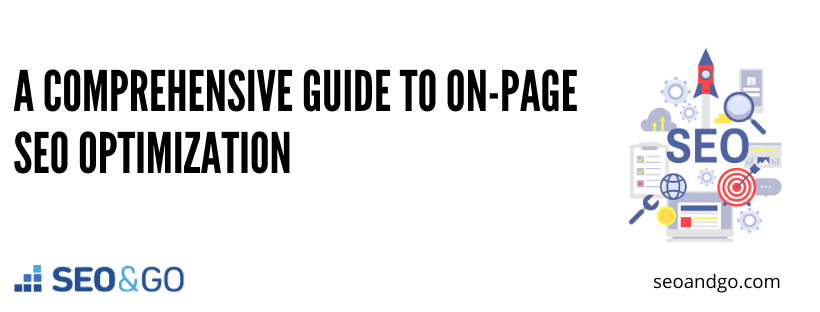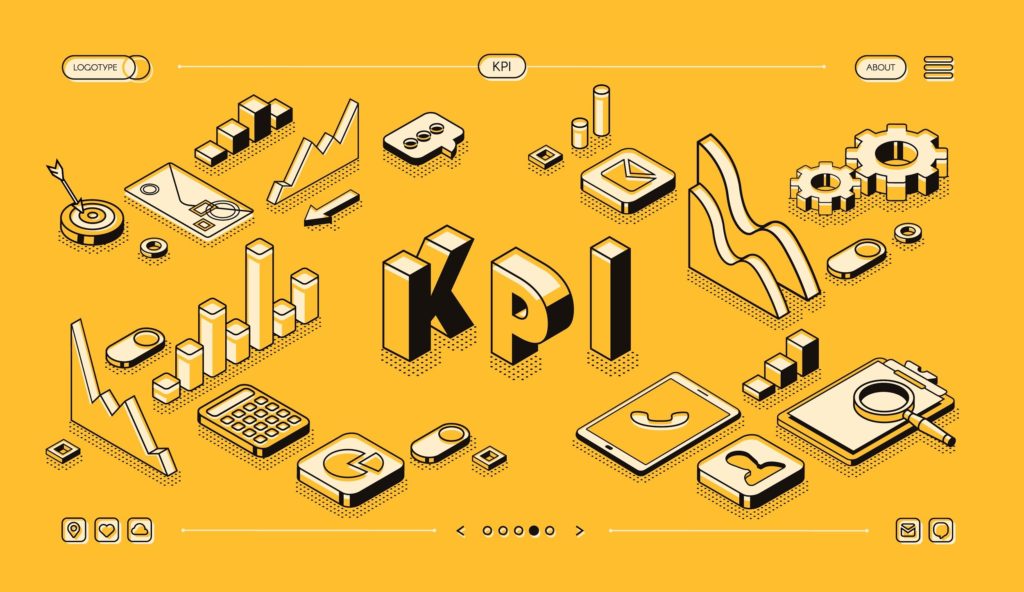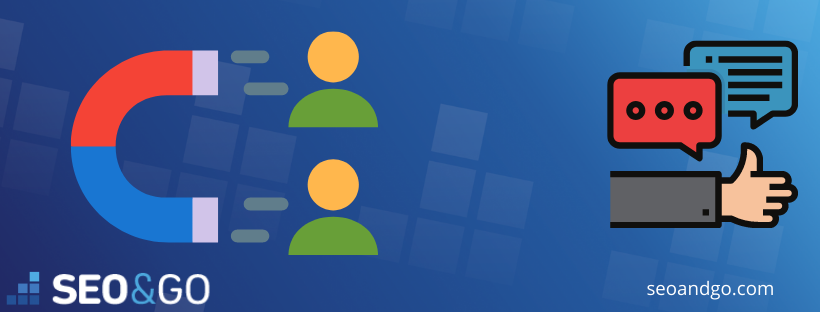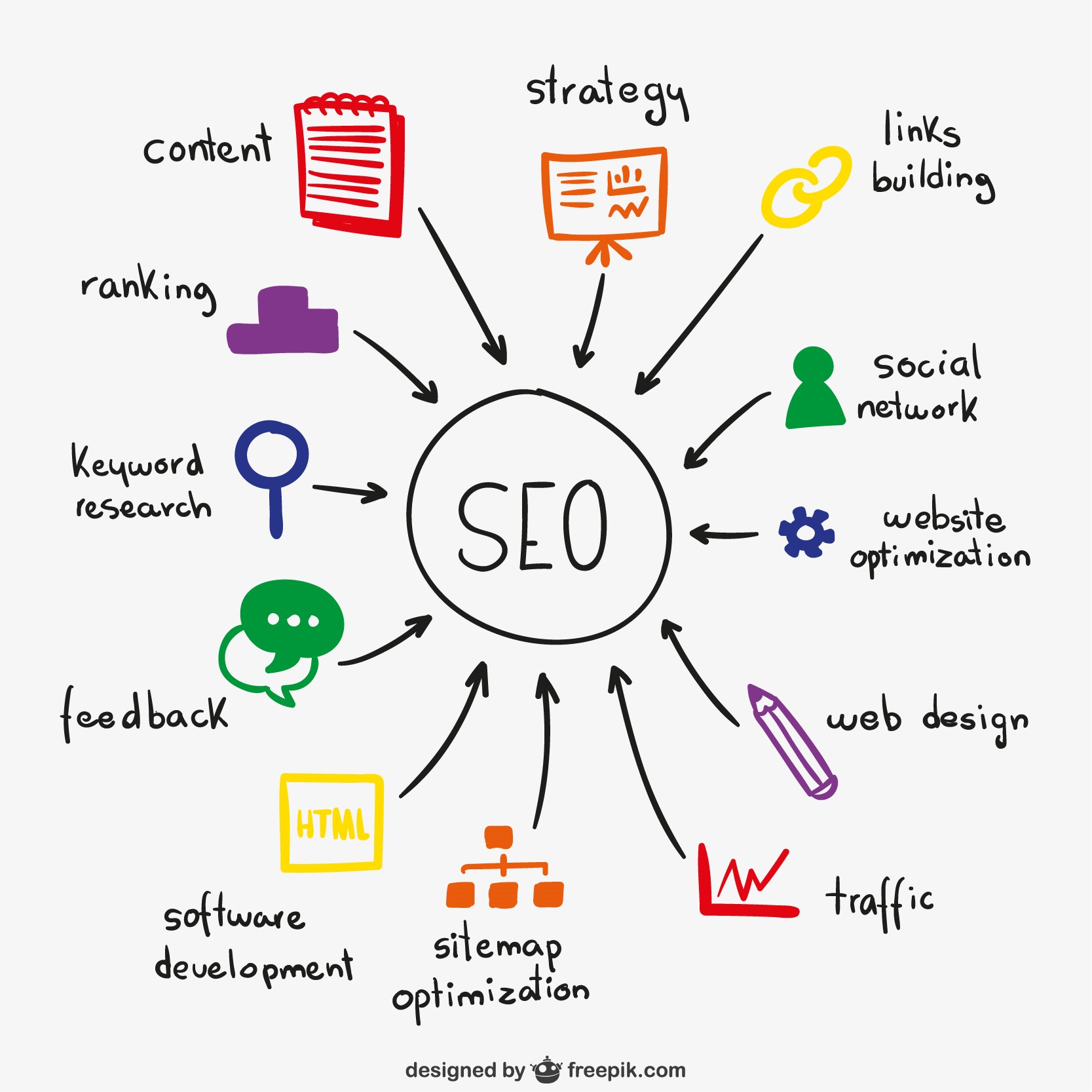How to do SEO in 2021
A comprehensive guide on how to do SEO in 2021
Do you want to optimize your web pages accurately? You have to understand the right techniques for on-page optimization.

On-page optimization means on-page SEO refers to essential measures to improve the ranking of a website. With these measures, you can improve the position of your web pages in search rankings. You must include essential steps to improve or optimize the title tags, meta description, and content.
You will need keywords for ranking and impressive content. There is nothing to worry about because on-page optimization is easy than your imaginations. For your assistance, practical advice is available in this guide.
Importance of On-Page Optimization
On-page optimization is a crucial stage for search engine optimization. It focuses on essential factors that can improve search engine rankings of your page. For successful SEO, on-page optimization is an important pillar. To track your ranking in Google you can use the #1 website Google rank checker
With the right techniques, you can get visibility in search results because the optimization of on-page factors is necessary. Remember, on-page optimization is a critical procedure of making adjustments and improve rankings of your site.

Designed by vectorpouch / Freepik
On-page optimization focuses on the HTML code and site content. Successful on-page can impact the visibility of your page on search results. Search engines are becoming complex and smart; therefore, it is difficult to maintain your good ranking. For on-page optimization, you have to focus on the following points:
- Content of Page
- Title
- HTML Tags
- Meta Tags
- Internal Links
The website content is a crucial element for SEO. You have to pay attention to your homepage to make it relevant to impress visitors. Avoid clustering keywords on your web page because it may be the reason for a decrease in the website ranking.
Get Targeted Customers
On-page optimization proves helpful in bringing targeted clients easily. By optimizing your website for specific customers, you can increase the number of targeted clients on your site. It helps you to get recognition for your brand among customers.

Remember, high ranking is essential to capture your targeted audience. Appropriate optimization can boost the visibility of web pages.
Important for Business Growth and Branding
With appropriate on-page optimization, you can impact the online growth of your business. It allows you to get more reach and increase rankings. You can increase rankings on search engines and reach customers looking for your products.
On-page optimization techniques help you to increase traffic. Some fixes will help you to target potential customers. Keep in mind, on-page optimization is affordable. It is easy to handle some basic tasks of optimizations.
Monitoring and Analysis of On-Page Optimization
Efficient on-page optimization needs a fusion of numerous factors. Make sure to focus on regular monitoring and analysis to improve the performance of your site. Optimization of the content or structure of the website can be beneficial.
To achieve your optimization goals, you have to pay attention to underlying issues. In numerous cases, measures of optimization may have opposite impacts because of zero planning. Your wrong moves may impact the ranking of keywords and decrease conversion rates.
Essential Factors for On-Page SEO
If you want to improve your search engine’s rankings, there are four crucial elements to consider:
Technical Optimization
You have to optimize some technical components of your website. See the details of these components:
Source Code
A source code plays a vital role in improving the performance of your website. Code section or superfluous functions may be removed. You can consolidate other elements to make indexing easy for Googlebot.
Speed of Server
The load time of a website is a vital element for search engines. It plays a vital role in the evaluation process of ranking. Make sure to speed up the response time of your server for on-page optimization.
IP Addresses
Make sure to have an exclusive IP address for every web project. It will signal to search engines that your website is unique.
Content for On-page Optimization
Content includes on-screen elements, such as images and texts. It includes crucial features, such as Meta information and alt-tags. See these critical components of content:
Text Optimization
The optimization of text depends on keyword density. The main objective of text optimization is to create exciting content. Remember, you have to focus on more than one keyword to write text. It covers a combination of terms and keyword clouds.
Remember, your content must describe a topic holistically and accurately. You have to understand the taste of your target audience and the needs of the search engine. If you are planning to optimize text for search engines only, this approach will not help you.
Structural Elements
It means bullet-point lists or paragraphs, bolding, italicizing, heading tags, words, and other text elements. To make your content digestible and user-friendly, you can use bullet points, small paragraphs, and images.
Graphics
To optimize content elements, you can use relevant images. With the help of well-optimized images, it is easy to earn a good ranking in Google’s image search. Graphics are useful to increase the attractiveness of your website.
Appealing galleries may increase the engagement of users on your website. In short, graphics are necessary for on-page optimization.
Exciting Videos
Just like images, videos are equally important for users. Webmasters and SEO experts specifically focus on audiovisual content. This type of content is actually crucial among users.
Meta Tags
Meta tags, including meta descriptions and meta titles, are necessary for ranking. Remember, meta titles are essential for ranking. Meanwhile, the meta description is an indirect factor to impact click-through rate (CTR) in result pages of the search engine.
No doubt, these elements are not visible for users. They are essential for the optimization of on-page content. With the use of meta-tags, you can ensure correspondence between topics and keywords in the text.
Structure and Internal Links
Internal linking is useful to guide a visit of the bot to a domain and to enhance the navigation of actual users.
Crawl Depth and Logical Structure
It is essential to carefully structure the menu and ensure four levels in the hierarchy of a website. With fewer levels, it will be easy for bots to reach a site and crawl every sub-page.
Canonization
Make sure to avoid duplicate content and appropriately use current canonical tags and assign pages with noindex attributes.
Internal Linking
It determines how the juice of links is distributed and managed around domains. Internal linking may increase the relevance of sub-pages related to a specific keyword. For on-page SEO, you will need a good sitemap. Remember, a sitemap is essential for the users and search engine crawlers to steer around a domain.
Focus
Pages may not contain useful content and may be considered evocative for the Google indexing. It must be tagged with metatag robots “noindex” to prevent their addition in search results.
Structure of URL
Checking is involved in this aspect regardless of the use of search-engine friendly URLs. Moreover, the logical relation of current URLs associated with each other is also important. The length of the URL may be an essential part of on-page optimization.
Web Design
Usability is an essential factor in web designing. Complicated graphics re replaced with simple substitutes to escalate the functionality of a web page. It may apply to different elements, such as JavaScript applications.
Mobile Optimized Website
It refers to the adaption of desktop content of the website to make it easily viewed and accessible on tablets, computers, and smartphones. Keep in mind that too large graphics and images can drastically increase the loading time of a web page. For on-page optimization, graphic designers and SEOs must use files of small size.
Call-to-Action
Particular page elements must be used for stimulation of action from the user. You have to encourage them to interact with the websites. Make sure to use a suitable call to action to motivate your visitors to take the desired action.
EAT (Expertise, Authoritativeness, Trustworthiness)
E-A-T means expertise, authority, and trustworthiness. The objective of websites is essential. For pages with beneficial purposes, elements of EAT are significant. See the viewpoint of Google:
- Expertise: It refers to the expertise of the creators of web pages. If web pages share details of authors, Google evaluates the trustworthiness of these people.
- Authoritativeness: Google evaluates the dependability of creators of a web page and the entire website.
- Trustworthiness: For Google, the integrity of developers of web pages and the entire website is essential.
As per Google, there are several big E-A-T websites and pages, gossip websites, humor websites, fashion websites, Q&A pages, and forums, etc. Some SEO experts pay attention to the signals of E-A-T and the influence of essential links from other sites.
Keyword Cannibalization
Keyword cannibalization means competition between different web pages for particular keywords. Your web pages are eating (cannibalizing) popularity from different other pages to get great ranks in search engines.
Sometimes, webmasters may not understand cannibalization. They may automatically optimize the similar keyword on every page to strengthen their SEO. It can hurt your search engine optimization.
Remember, keyword cannibalization can be detrimental for your website and may affect pages in these ways:
- Impact on the Quality of Web Content: When you write on a topic on each page, your content may sound dull and replicated. As a result, the attraction of your website may decrease for customers.
- Limit Traffic of Search Engine: You should not put your keywords in a cyber-basket. Several variations can impact the ranking as compared to a keyword/phrase repeated on each page.
- Decrease the Effectiveness of SEO: Keyword targeting, link power, and anchor text are available on several pages. Pages of website compete against each other in different search engines.
- Reason for Bad Indexing: Google is responsible for crawling web pages and choosing several versions of pages based on the best queries.
SEO Writing
For on-page optimization, SEO writing is a crucial writing tool for websites to become visible to search engines. If a visible website has good content, it can appear on the initial pages when a person searches for a specific topic.
The higher ranking of a website in Bing or Google will make it visible for maximum people. More visitors on your website mean more sales, fans, and readers. SEO writing jobs are in demand; therefore, companies hire high-quality SEO copywriters.
SEO copywriters are people who write around particular keywords. They have to figure out essential phrases and write about these phrases succinctly and clearly. A good writer must use primary keywords efficiently to help readers find your website.
Content Audit
Content audit means looking at the content on different web pages. It involves the evaluation of comparative weaknesses and strengths to prioritize the future’s marketing activities. It is a qualitative evaluation and assessment based on key performance indicators (KPIs) that you choose beforehand.
With a well-executed audit on an annual basis, it is possible to deliver significant insights to your blog, content advertising strategy, and website. Remember, the content audit must not be confused with the content inventory.
Inventory involves the quantitative collection, and it is an essential element of the audit procedure. With a tool for content analysis, you can easily complete content auditing. An audit will help you to understand essential terms from content marketing and SEO perspective.
Optimization of Image
Images are vital to connect users to products of your business. If the loading time of your website is over 3 seconds, users may leave it. Maximum load time can increase the bounce rate and impact your conversions.
With the help of image optimization, you can improve your website’s load speed and boost its ranking. The speed of the web page is the time that a website takes to load completely. It may depend on several factors ranging from website host to design and layout of website.
Users love to visit a website with less than two seconds of loading speed. By optimizing the weight of your website, you can increase its speed. To manage load speed, make sure to optimize images. It gives a faster experience to visitors to your site.
Different tools are available to evaluate the speed of your page. Image optimization is beneficial for on-page optimization. Digital marketers understand the significance of search ranking. Moreover, image optimization is significant in this process.
User Engagement
Several SEO professionals understand the importance of user engagement. Use engagement refers to the interaction between visitors and businesses through its official website. Engagement types may vary, such as CTR (click-through rate) and actions from outside sources.
CTR offers an entry-level engagement that is necessary for an engagement at an advanced level. With click-through rate, optimal SEO practices are essential to highlight the first SERPs page. It gives the answers for different queries.
Along with content, you have to focus on different types of meta descriptions and content titles. These things should encourage visitors to click through a website.
Actions from Other Sources
You can’t depend on only on-site engagement because valuable engagement involves several outside sources. Here are some relevant sources:
- Linking to content
- Sharing content on different platforms that improve your reach
- Driving traffic to a website
- Inspiring users for engagement through different methods
Inbound links act as an essential SEO ranking factor. Readers must find your content authoritative to write on a related topic. Sharing content on various social platforms may not be a ranking factor that affects SEO.
It may help you to drive maximum traffic on your website and encourage maximum visitors, conversions, and links. Liking, commenting, subscribing, and sharing are different versions of user-engagement.
High-Quality Content and Low-Quality Content
Google has guidelines to write high-quality content, such as create content for readers instead of search engines. You should not deceive users and avoid tricks to increase your search engine rankings. Try to make your website engaging, valuable, and unique.
Make sure to create informative and useful content. You have to create useful content, such as contact information, product details, operational hours, etc. It is essential to use original research, links, reviews, testimonials, and citations.
Similar to high-quality content, there is no particular definition of low-quality content. It depends on the expertise and knowledge of the reader. Content can be low-quality or high-quality, based on the reader.
Remember, content must be free from typos, spelling mistakes, and other errors. These things can irritate readers and decrease their trust. Avoid punctuation and grammatical errors in your content.
Best Practices for On-page Optimization
For on-page optimization, you have to focus on the best practices. See these essential elements:
Title Tags
Title tags are important for on-page optimization. It tells search engines about a web page. You have to use relevant keywords and phrases in these tags and select unique phrases for every page. Remember, search engines will highlight these phrases. These prove helpful in increasing the click-through rate and visibility of your website.
Meta Descriptions
These are important for search engine rankings. Meta descriptions enable users to click through from SERP. Wisely use keywords in a compelling meta description. Like title tags, these descriptions will highlight vital keywords and increase the probability of click through to a website.
Targeted Keywords in Content
Content acts as the potatoes and meat of a website. It is essential to write relevant and unique content. Similar content on multiple pages may increase the risk of penalty from Google. For this reason, you have to create exclusive content with relevant keyword phrases.
Header Tags
A header tag, aka H1 tag, is similar to the subject line of a web page. Make sure to use a keyword phrase in the heading (H1) tag. It must be included on a web page with unique content. With these phrases, you can drive traffic. In the case of multiple sections, you can use H2 tags.
Filenames and ALT Tags for Images
Alt tags mean the name of images because every image needs a suitable alt tag. Remember, these tags are essential for search engines and accessibility. It proves helpful for screen readers because they can hear about images.
Try to include a keyword phrase in the name of the image, but avoid overdoing it. Filenames of images must be SEO friendly. It will help you to get the advantage of image search because traffic from this source is valuable.
Canonical Tags
These tags are placed on a webpage in HTML headers. It informs the search engines that URL is an authoritative version. The primary purpose of this page is to manage duplicate content. Moreover, keep this content away from the indexing of search engines.
Perfect Structure of a Website
The structure of a website is vital to increase the interest and engagement of users. Besides white space, images, graphics, kerning, fonts, and colors, good web design needs an excellent structure.
A good structure offers sitelinks to a website. Remember, sitelinks are listing formats in SERPs that display the main page of your website along with different internal links. You will get SEO advantages from sitelinks.
With the sitelinks, you can increase the navigability of a website. It will be easy for users to find the most relevant data, enhance the reputation of your brand, and improve user trust and dominate SERPs. Moreover, it is beneficial for click-through rates and contracts your conversion funnel.
Strategic Placement of Target Keywords
SEO and content marketing are closer buddies. You will need the right keywords to optimize the content of your page. Several tools are available to search target keywords. Make sure to choose the best place for your keywords, such as upper body, lower body, footer, header, and sidebar.
Conclusion
The accessibility and visibility of your website are essential. For this reason, you have to understand the importance of on-page optimization. With these techniques, it will be easy for you to improve the ranking of your website.
Your website needs targeted keywords, quality content, the best web design, and several other elements. Search engines crawl pages of your website and index them in databases. As a result, your website will display relevant results.
This guide has essential techniques to optimize your website and increase the visibility of your brand. These things prove helpful for the official website of your business. The content of the page is an essential factor for on-page optimization. Some best SEO practices include URL, title tag, alt text for image, and content of web pages.






Recent Comments